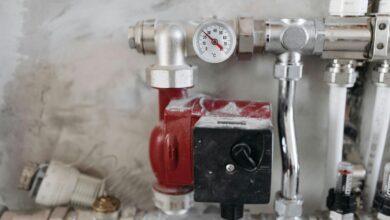Restful Nights: Choosing the Right Mattress Protector for You

In the realm of ensuring a nights sleep and taking care of our mattresses mattress protectors play a role, as unsung heroes. These essential accessories do not preserve the longevity and cleanliness of our mattresses. Also provide added comfort and protection. This article delves into the world of protectors exploring their important factors to consider when choosing the one and how they contribute to creating a healthier and more comfortable sleep environment.
I. The Role of Mattress Protectors:
a) Introduction to Mattress Protectors:
Also known as mattress covers or encasements mattress protectors are bed linens designed to shield mattresses from potential hazards. They offer protection against spills, stains, allergens, dust mites, bed bugs and general wear and tear. Additionally these covers often enhance comfort levels. Regulate temperature for a sleeping experience.
b) Types of Mattress Protectors:
There are types of protectors available that serve specific purposes. For instance encasements provide coverage while safeguarding against allergens and bed bugs. Waterproof covers are designed to protect against spills and stains while hypoallergenic covers serve as a barrier, against dust mites and allergens.
II. The Importance of Protection
a) Extending the Lifespan of Your Mattress:
Investing in a high quality mattress covers requires a commitment and protective mattress covers play a crucial role in preserving this investment. By preventing spills, stains and everyday wear and tear these covers ensure that your mattress remains in condition for a period.
b) Defense Against Allergens and Dust Mites:
Mattresses can harbor allergens and dust mites, which can be problematic for individuals with allergies or respiratory issues. Protective mattress covers act as a shield preventing these intruders from infiltrating the mattress and creating a sleeping environment.
c) Resistance to Spills and Stains:
Liquid spills on the mattress can lead to stains and unpleasant odors. Water-resistant protective mattress covers provide a barrier against liquid spills ensuring that your mattress stays clean and free from any smells.
III. Factors to Consider When Selecting Protective Mattress Covers:
a) The Choice of Materials:
Protective mattress covers are available in materials such, as cotton, polyester, vinyl or fabrics derived from bamboo. When selecting a cover it’s important to consider the type of material you prefer. Different materials can affect factors, like how breathable, soft or noise absorbing the cover’s. You should also think about any needs you have such as wanting a cover or one that helps with moisture wicking.
Next make sure that the protective cover fits your mattress properly for it to be effective. Check the dimensions of your mattress. Choose a cover that matches its size. Some covers have sides or adjustable features to accommodate mattresses of depths.
If you’re concerned about spills and want protection against them it’s essential to choose either a water mattress cover. These covers act as a barrier against liquids so they don’t seep into your mattress. Waterproof covers are especially useful for households with children or individuals who may have accidents.
Considering breathability and comfort is crucial for maintaining a sleep environment. Look for protective mattress covers that allow airflow and enable heat and moisture to escape. Materials like cotton and bamboo are known for their breathability ensuring you’ll have a comfortable surface to sleep on.
If you have allergies or sensitivities it’s advisable to select a mattress cover, with properties.
These mattress covers are specially designed to resist allergens like dust mites, mold and pet dander creating a sleep space that’s less prone to allergies.
b) Noise Level:
Some waterproof mattress covers may produce noise when you move on them. If having a quiet sleep surface is important, you look for covers that are designed to be noiseless or have noise levels. Advancements in technology have allowed for the development of covers that offer protection without the crinkling sounds often associated with older models.
IV. Types of Protective Mattress Covers:
a) Waterproof Mattress Covers:
Waterproof mattress covers are specifically designed to repel liquids and’re perfect for protecting against spills, bedwetting or other liquid accidents. These covers usually have a layer made of polyurethane or vinyl that creates a barrier while still allowing breathability.
b) Allergen Proof Mattress Covers:
Allergen proof covers are crafted to prevent allergens such as dust mites, pollen and pet dander from infiltrating the mattress. These covers often use woven fabrics and specialized closures to seal off the mattress.
c) Bed Bug Proof Mattress Encasements:
For protection, against bed bugs mattress encasements provide coverage by encasing the mattress. These mattress covers have zippers. Sealed seams to prevent bed bugs from getting in or out.
d) Cooling Mattress Protectors:
Some high quality mattress covers are made with cooling materials that absorb moisture and heat which can be beneficial, for people who tend to get hot while sleeping or live in areas.
V. Installation and Maintenance:
a) Easy Installation:
Most mattress covers are designed for installation with elastic edges or fitted designs that make it simple to put the cover on the mattress. Follow the instructions provided by the manufacturer for the results.
b) Regular Washing:
Keeping your cover clean is important for protection. Check the care instructions. Many covers can be machine washed. Regular washing helps remove allergens, dust and any potential odors.
VI. Beyond Protection: Additional Benefits of Mattress Covers
a) Enhanced Comfort:
Many mattress covers not provide protection but offer added comfort with features, like quilted padding or soft breathable fabrics that contribute to a better sleep experience.
b) Temperature Regulation:
Some high quality mattress covers are designed to regulate temperature. These mattress covers help regulate your body temperature while you sleep ensuring a peaceful night of rest.
c) Maintaining Mattress Warranty:
Using a mattress cover may be necessary to keep your mattress warranty valid. Check the terms of the warranty as some manufacturers require that the mattress is protected by a cover in order to qualify for coverage.
VII. Conclusion: Find Peace of Mind with the Right Protective Mattress Cover
When it comes to achieving high quality sleep and prolonging the lifespan of your mattress choosing the best mattress cover is crucial. These guardians not shield your mattress from threats but also create a healthier and more comfortable sleep environment. Whether you prioritize waterproofing allergen resistance or enhanced comfort there are plenty of covers in the market to cater to your specific needs.
As you embark on the journey of selecting the protective mattress cover, for yourself consider features that align with your preferences and requirements. From choosing the material and size to exploring benefits, finding the ideal protective cover will ensure that your mattress continues to be a haven of comfort allowing you to enjoy restful nights and extending its overall lifespan.
Sleep peacefully knowing that your mattress is safeguarded by a selected mattress cover. Each night you can enjoy a revitalizing sleep without any concerns about the condition of your mattress.



